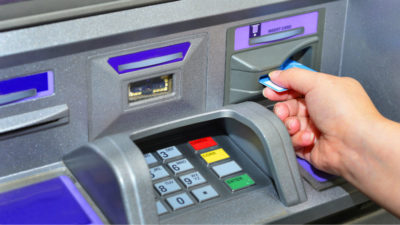Historically, stocks deliver higher returns than interest-producing investments such as GICs and bonds. So, risk-averse investors might decide to hold stocks in a tax-free savings account (TFSA) to target higher returns.
Benefits of investing using a TFSA
What’s earned inside a TFSA is tax free, whether it’s capital gains or dividends. So, the earlier you invest using a TFSA, the sooner compounding works its magic. Compounding is growing money with money over time.
For example, if you had invested $5,000 in Enbridge Inc. (TSX:ENB)(NYSE:ENB) in 2009 for $20 per share, it would have grown to $10,550 for a total return of 211%. Almost 168% was from capital appreciation and 43% was from dividends. The annualized rate of return would have been 17%.
The $5,550 gains in capital growth and dividends won’t be accessed by the taxman if you hold the shares in a TFSA.
You could also have reinvested the Enbridge dividends in additional shares through its dividend-reinvestment program for higher returns.
Contributions
Anyone 18 years old or older with a social insurance number can open a TFSA. However, any contributions made by non-residents will be subject to a 1% tax for each month the contribution stays in the account.
The contribution room for each year accumulates if it’s not used. From 2009 to this year, the contribution rooms are as follows:
| Year | Contribution Room |
| 2009 | $5,000 |
| 2010 | $5,000 |
| 2011 | $5,000 |
| 2012 | $5,000 |
| 2013 | $5,500 |
| 2014 | $5,500 |
| 2015 | $10,000 |
| 2016 | $5,500 |
| Total | $46,500 |
If you were at least 18 in 2009 and never contributed to a TFSA, you’d have $46,500 of contribution room this year. If you get the average market returns of 7-10% per year, that’s a lot of tax savings in a lifetime.
Withdrawals
If you withdraw from a TFSA, you can contribute that amount back in the next calendar year. For example, if you’ve consistently contributed the full amount each year, including this year, and you decide to take out $1,000 for an emergency, you can only re-contribute the $1,000 when 2017 rolls around.
However, if you’ve only contributed $10,000 in your TFSAs in total and you withdrew $1,000 for an emergency, you still have $36,500 contribution room left for this year. And the $1,000 that you withdrew can be added to your contribution room when 2017 rolls around.
Beware
Investors should be aware that just as any gains are not taxed in a TFSA, any losses are also ignored and can’t be used to offset capital gains as they do in a non-registered account.
That’s why it’s particularly important to buy quality companies at reasonable valuations in a TFSA. They should be companies that you plan to hold for a long time, so you can ignore short-term volatility. The longer time horizon you have, the more likely your investments will experience gains.
Conclusion
Once investors learn the ropes of investing in a non-registered account, where they can use capital losses to offset capital gains, investors should consider investing quality stocks at reasonable valuations in a TFSA for a lifetime of tax-free growth.
If you invest $5,500 in a TFSA each year for an annualized 7% return, in 20 years you’ll amass $241,258 ($110,000 of that is your original savings, and $131,258 is growth from your investments).







